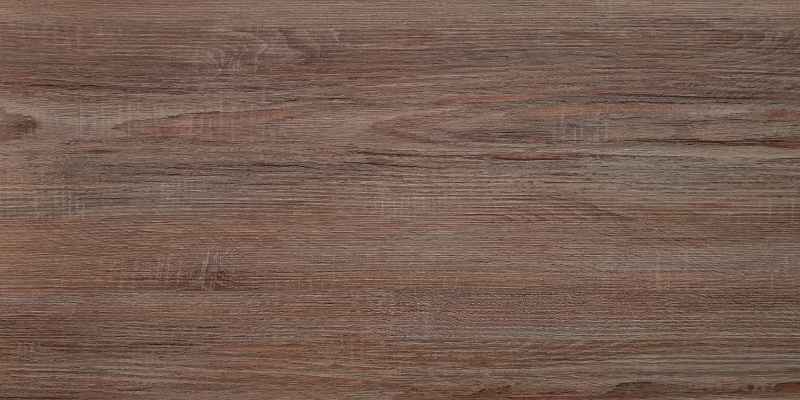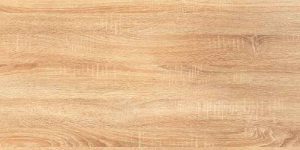When it comes to finding a wood better than teak, it’s important to consider iroko wood. Known for its durability and strength, iroko is a highly-regarded alternative to teak for various woodworking projects.
When it comes to outdoor furniture and other woodworking projects, finding the right wood is crucial. While teak is known for its exceptional durability, there are alternatives worth considering. One such wood is iroko, which boasts similar qualities to teak and is often used as a substitute.
With its resistance to decay and impressive strength, iroko wood offers a great alternative to teak for various applications. Considered an excellent choice for outdoor furniture and marine applications, iroko wood is a worthy contender in the search for a wood better than teak.
Teak Wood Overview
Teak wood is highly valued for its exceptional durability, resistance to rot, and beautiful appearance. It is often sought after for use in high-quality furniture, boat building, and outdoor construction due to these desirable qualities. Let’s delve into the characteristics and common uses of teak wood to understand why it is such a prized material.
Characteristics Of Teak Wood
- Exceptional Durability: Teak wood is renowned for its outstanding durability, making it resistant to decay, rot, and pests.
- Natural Oils: The wood contains natural oils that contribute to its water-repellent properties and enhance its longevity.
- Beautiful Grain: Teak wood features a distinct golden-brown grain that adds to its aesthetic appeal.
Common Uses Of Teak Wood
- Furniture: Teak wood is commonly used in crafting high-end indoor and outdoor furniture due to its durability and timeless beauty.
- Boat Building: It is a preferred choice for boat construction as it can withstand harsh marine environments.
- Outdoor Construction: Teak wood is often utilized in outdoor decking, flooring, and structures due to its resistance to weathering.
Challenges With Teak Wood
While teak wood is often considered a top choice for furniture and outdoor applications, it does come with its fair share of challenges. These challenges include environmental concerns and cost-effectiveness. Let’s take a closer look at each of these factors.
Environmental Concerns
One of the main concerns with teak wood is its impact on the environment. Teak is typically sourced from tropical rainforests, which are often delicate ecosystems with unique biodiversity. The extensive logging of teak trees can lead to deforestation and habitat destruction, threatening various plant and animal species.
Furthermore, illegal logging practices are a significant issue in teak production, contributing to environmental degradation and fueling the black market for timber. As conscientious consumers, it’s essential to consider the environmental implications of our choices and opt for more sustainable alternatives.
Cost-effectiveness
Another challenge with teak wood is its cost-effectiveness. Teak is known for its exceptional durability and resistance to rot, making it a long-lasting option for furniture. However, the high demand and limited supply of teak result in premium prices.
In addition to the initial cost of teak furniture, there are maintenance expenses to consider. Teak requires regular cleaning, sealing, and occasional oiling to maintain its appearance and protect it from weathering. These additional costs can add up over time, making teak wood a less budget-friendly option compared to some alternatives.
Fortunately, there are other wood options available that offer comparable qualities to teak, while being more environmentally friendly and cost-effective. Some alternatives to consider include oak, rosewood, acacia, mahogany, and sal wood.
Alternative Wood Options

Teak wood is widely known for its exceptional durability, fire resistance, and beauty. However, there are several alternative wood options that are equally, if not more, impressive in quality. These alternatives offer unique characteristics and benefits that make them stand out in their own right. Let’s explore some of these alternatives:
Oak Wood
Oak wood is a popular choice for furniture and construction due to its strength and durability. It is known for its distinct grain patterns and natural beauty. Oak wood is resistant to moisture and decay, making it suitable for outdoor applications as well. This versatile wood is available in different finishes and colors, allowing you to create a personalized look for your furniture.
Rosewood
Rosewood is renowned for its smooth texture and rich, dark chestnut hue. It is a dense and heavy wood that offers excellent durability and strength. The natural oils in rosewood make it resistant to insects and rot, ensuring longevity. The fine grains and exquisite colors of rosewood make it a preferred choice for high-quality furniture pieces.
Sheesham Wood
Sheesham wood, also known as Indian Rosewood, is prized for its unique grain patterns and rich brown color. It is a sturdy and durable wood that can withstand the test of time. Sheesham wood is resistant to warping and cracking, making it suitable for furniture that requires stability. Additionally, this wood has a high resistance to moisture, making it ideal for humid climates.
Iroko Wood
Iroko wood is an African hardwood that shares many similarities with teak. It is highly durable, resistant to rot and insects, and has a beautiful golden-brown color. Iroko wood is commonly used for outdoor furniture, decking, and boat building due to its exceptional weather resistance. Its stability and longevity make it a reliable alternative to teak.
Ipe Wood
Ipe wood, also known as Brazilian Walnut, is a dense and durable wood that offers remarkable strength and longevity. It is highly resistant to rot, insects, and weather elements, making it ideal for outdoor applications. The natural dark brown color and fine grain patterns of ipe wood create a visually appealing finish that enhances the beauty of any furniture piece.
These alternative wood options provide an excellent choice for those seeking high-quality and durable alternatives to teak. Each wood type has its own unique characteristics and benefits, allowing you to choose the one that best suits your needs and personal preferences.
Comparison Analysis
When it comes to comparing different types of wood with teak, it’s essential to analyze key factors such as strength and durability, appearance and aesthetics, and resistance to elements. Understanding these aspects can help in making an informed decision about which wood might be a better choice than teak for various applications. Let’s delve into a detailed comparison analysis for a better understanding.
Strength And Durability
Teak is known for its remarkable strength and durability, making it a popular choice for outdoor furniture and marine applications. However, when comparing it with other woods, Iroko stands out due to its exceptional strength properties. With a Janka hardness rating of up to 1260, Iroko surpasses teak’s rating, making it a better option for applications where superior durability is required.
Appearance And Aesthetics
While teak is prized for its natural beauty and classic appeal, other woods such as Rosewood offer equally stunning aesthetics. Rosewood boasts a rich, dark chestnut hue with a naturally grainy texture, making it a visually appealing choice for furniture and decorative items. The distinguished appearance of Rosewood provides a viable alternative to the traditional elegance of teak.
Resistance To Elements
In terms of resistance to environmental elements, Sheesham Wood emerges as a standout contender. With its innate capability to withstand moisture, decay, and pests, Sheesham Wood presents a compelling option for outdoor and high-humidity indoor settings. This exceptional resistance sets it apart as a wood that surpasses teak in certain environmental conditions.
Customer Preferences
Customer Preferences: In the realm of wood selection for furniture, customer preferences play a crucial role in determining the popularity and market demand of various wood types. Understanding these preferences helps stakeholders align with consumer needs and desires.
Feedback And Reviews:
- Customers often provide insightful feedback on their experiences with different types of wood.
- Reviews can highlight the durability, aesthetics, and overall satisfaction levels associated with specific wood varieties.
- Positive feedback can significantly influence the choice of wood for furniture manufacturing.
Trends In Wood Selection:
- Current trends show a growing interest in sustainable and eco-friendly wood options.
- Consumers are increasingly opting for wood varieties that offer a balance of durability and aesthetics.
- Unique and exotic wood species are gaining popularity among a niche market segment.
Practical Considerations
Consider practical alternatives to teak wood, such as oak or rosewood, which offer exceptional durability and fire resistance. These high-quality woods can be used to make furniture and provide a smooth texture and appealing aesthetics.
Maintenance Requirements
Regular cleaning and sealing are crucial for the upkeep of any wood type, including teak. However, alternative woods may require less frequent maintenance due to their inherent properties.
Longevity And Lifecycle
When considering longevity, alternative woods such as cedar or redwood can rival teak’s durability. Understanding the lifecycle of these woods is essential for long-term investment.

Frequently Asked Questions For Which Wood Is Better Than Teak
What Is Better Than Teak?
Teak is one of the best quality woods for furniture, but other high-quality options include oak, mahogany, acacia, and rosewood. Each has its unique strengths, such as durability, fire resistance, or smooth texture. Consider your specific needs and budget when choosing the best wood for your furniture.
Which Wood Is Highest Quality?
Teak wood is known for its exceptional durability and fire resistance, making it one of the highest quality woods. Other quality options include oak, acacia, mahogany, sal, deodar, and rosewood. Teak stands out for its long-lasting properties and is a popular choice for furniture making.
Which Wood Is Better Oak Or Teak?
Teak wood is better than oak due to its exceptional durability, fire resistance, and resistance to mold, mildew, and rot. Oak lacks the same level of strength and may show dents and scratches. Oak can be a cost-effective alternative for hardwood furniture.
Which Is Better Rosewood Or Teak Wood?
Teak wood is renowned for its smooth texture and yellowish-brown grains, while rosewood has a dark chestnut hue and natural grain. In terms of aesthetics and texture, teak wood is considered better.
Conclusion
Both sheesham and teak woods offer unique advantages in furniture making. While teak is renowned for its exceptional durability and fire resistance, sheesham is more sustainable and affordable. Each wood has its own distinct characteristics, allowing consumers to choose the best option based on their specific needs and preferences.


